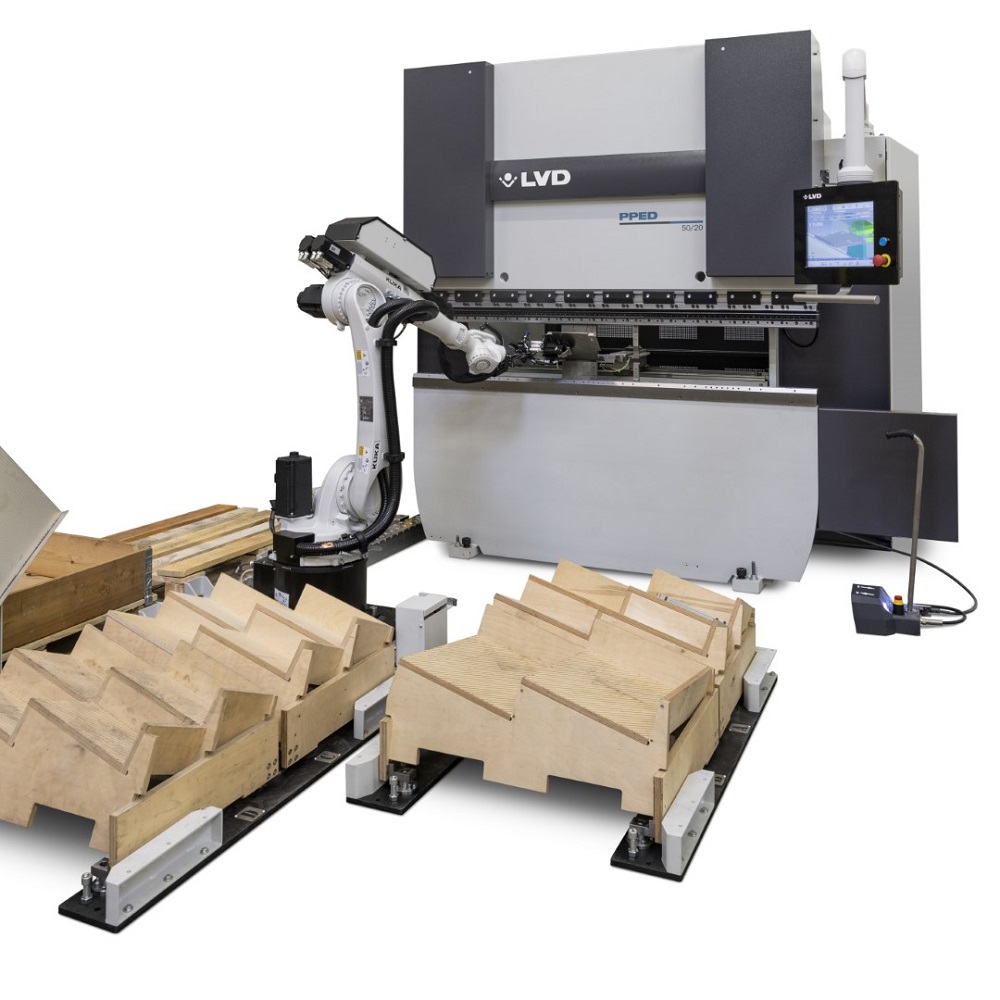LVD is introducing D-Cell, its most competitively-priced robotic bending cell yet. D-Cell combines a 50-tonne hydraulic press brake with a Kuka industrial robot and LVD’s proprietary programming software.
As manufacturers look to balance costs, quality, throughput and agility, LVD says that D-Cell offers the flexibility to handle production of a wide range of parts with fast throughput, in varying lot sizes, and at a minimised cost. At the heart of D-Cell is the versatile PPED press brake. A simple, cost-efficient design makes PPED practical and easy to use for a variety of bending jobs. According to LVD, the machine’s rigid construction, welded one-piece frame and servo-controlled hydraulic system ensure consistent bending results. It delivers 50 tonne of pressing force, has a 2000 mm working length, four-axis backgauge, and handles part sizes from 35 x 100 mm up to 400 x 600 mm with a part weight of up to 4 kg.
D-Cell features the same automatic programming software as LVD’s Dyna-Cell and Ulti-Form robotic bending systems. Using CADMAN software, D-Cell accelerates ‘art to part’ production in 20 minutes or less. It generates the bending and robot program automatically in 10 minutes and then takes just 10 minutes for set-up and first part production. No robot teaching is needed, making D-Cell easy to program no matter the user’s experience level. Also simplifying its operation: the system uses one interface, one controller for both press brake and robot.
A universal gripper designed by LVD handles different part sizes, bends up to three flanges without regripping and moves easily between tool stations. Its universal application saves investment in custom grippers, reduces changeover time and keeps production continuous.
For further information www.lvdgroup.com















